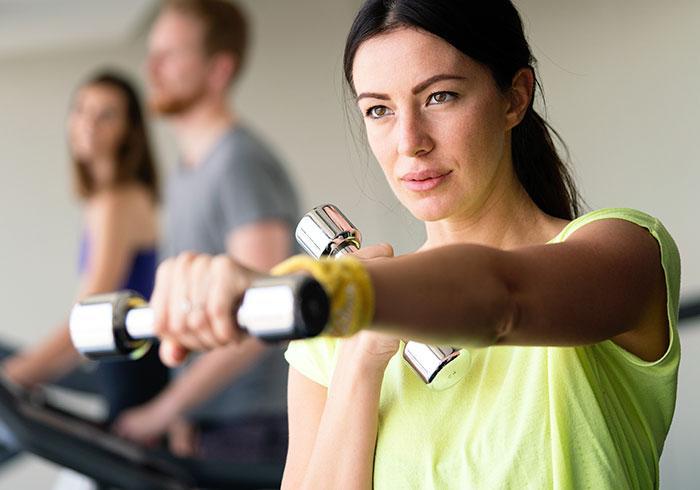Even if you don’t think you know what aerobic exercise is, chances are you know all about it. Every time you walk, dance or ride a bike, you’re doing it! And you probably know all about the benefits: Aerobic exercise improves heart health, increases your metabolism, aids weight loss, lowers your blood pressure, increases your HDL (“good”) cholesterol and boosts your mood.
And here’s some good news: It’s particularly beneficial for people with diabetes. It can lower your blood glucose, or blood sugar, during a workout and for up to 24 hours after. Plus, as you do it more, your body becomes better at processing glucose, and your insulin sensitivity increases. The Standards of Medical Care in Diabetes recommends getting 150 minutes of moderate-intensity aerobic exercise per week.

But what about vigorous activity? When you push yourself to your highest effort level, you switch from aerobic to what’s known as anaerobic exercise. During the former, oxygen is able to get to your muscles (hence the “aero” in aerobic), but not with the latter. Any physical activity performed at an intensity that does not allow sufficient oxygen delivery to muscles is anaerobic.
Here’s how—and why—you should incorporate both forms of exercise into your routine (spoiler alert: You may already be doing it!). Just be sure to check with your health care provider before starting or changing your exercise plan.
The Difference Between the Two
Oxygen isn’t the only difference between aerobic and anaerobic exercise. Your body also powers them differently. When you’re working aerobically (such as when you walk on a treadmill), fat and glucose provide energy. Move anaerobically—as you would during a sprint—and the body pulls glycogen (a form of glucose) from the muscles to be used for fuel. The depleted glycogen stores and buildup of lactic acid during high-intensity anaerobic exercise are part of why the activity can make your muscles so tired.
Like aerobic exercise, anaerobic burns calories and improves your cardiovascular health, insulin sensitivity and blood glucose management. There’s a big difference for your muscles, though: Anaerobic exercise also improves power and builds muscle strength and mass.
How can you tell when you’ve switched from one form of exercise to the other? When you’re exercising aerobically, you can keep going for a longer period than you can with anaerobic exercise. Anaerobic exercise is intense, and you can only perform it for a short time.
If you work out regularly, you’re incorporating anaerobic exercise into your sessions—even if you don’t realize it. With any form of physical activity, there will be some aerobic and anaerobic component, and this is especially true of sports that combine less-vigorous activity with sprints, such as basketball and tennis.
Anaerobic Exercise and Rising Blood Glucose Levels
You may notice your blood glucose rise for up to an hour with intense activity, such as weight lifting—but don’t worry. It’s due to the initial stress of pushing your body hard, and it’s more than offset by the improvements in insulin sensitivity and other benefits derived from anaerobic exercise.
Adding Anaerobic Exercise to the Mix
Weight lifting is a smart way for people of any fitness level to include anaerobic exercise in their routine. Resistance training improves blood glucose control and helps the body use insulin more efficiently. It also decreases fat mass, increases muscle mass and improves strength. People with diabetes should aim for two or three resistance-training sessions per week.

To add more anaerobic exercise to your cardio sessions, you can try what’s known as high-intensity interval training (HIIT)—but be sure to get your doctor’s OK first! HIIT involves alternating longer periods of physical activity done at a moderate intensity with short bursts, often less than a minute, at a vigorous intensity. For example, walk or jog at a comfortable pace for three to five minutes, and then move as fast as you can for 30 to 60 seconds. Repeat this pattern two or three times. Gradually increase the time you spend during your workout alternating your intensity as opposed to moving at a steady effort level.
As you do more of those intervals, your body adapts, and they become easier. Research shows that working out like this improves your fitness level faster than moving at a moderate intensity for a longer time.
What’s more, high-intensity interval exercise may be particularly beneficial for people with diabetes. However you get anaerobic exercise—high-intensity bursts of activity, weight lifting or both—one thing is clear: It can boost the health benefits of your aerobic workout. If you’re physically able, try to add anaerobic activity to your exercise plan.





